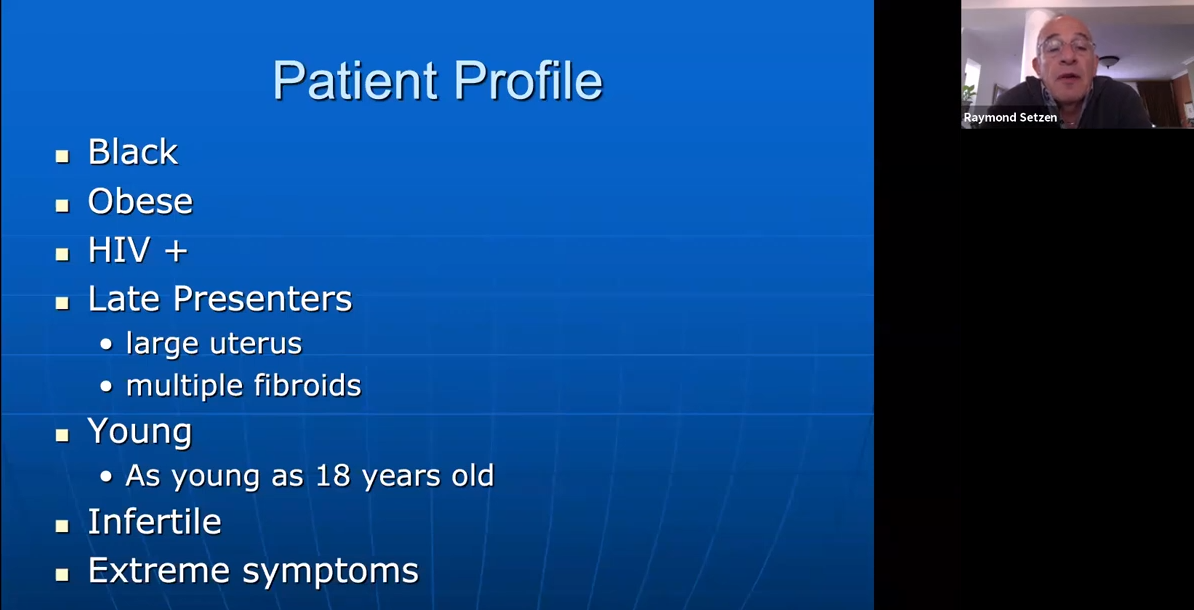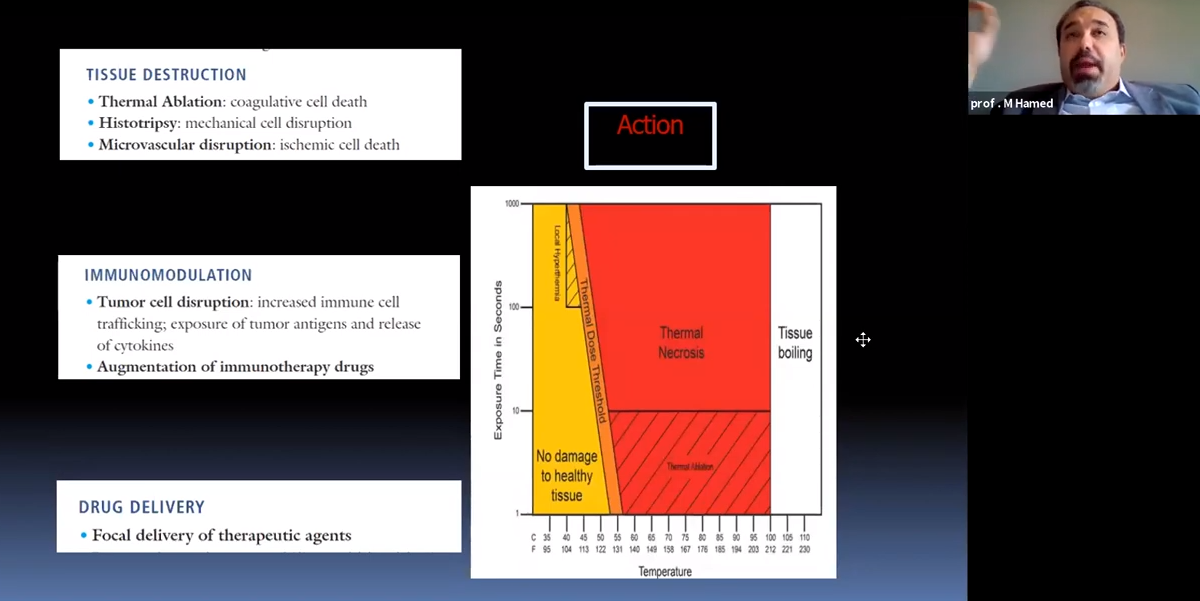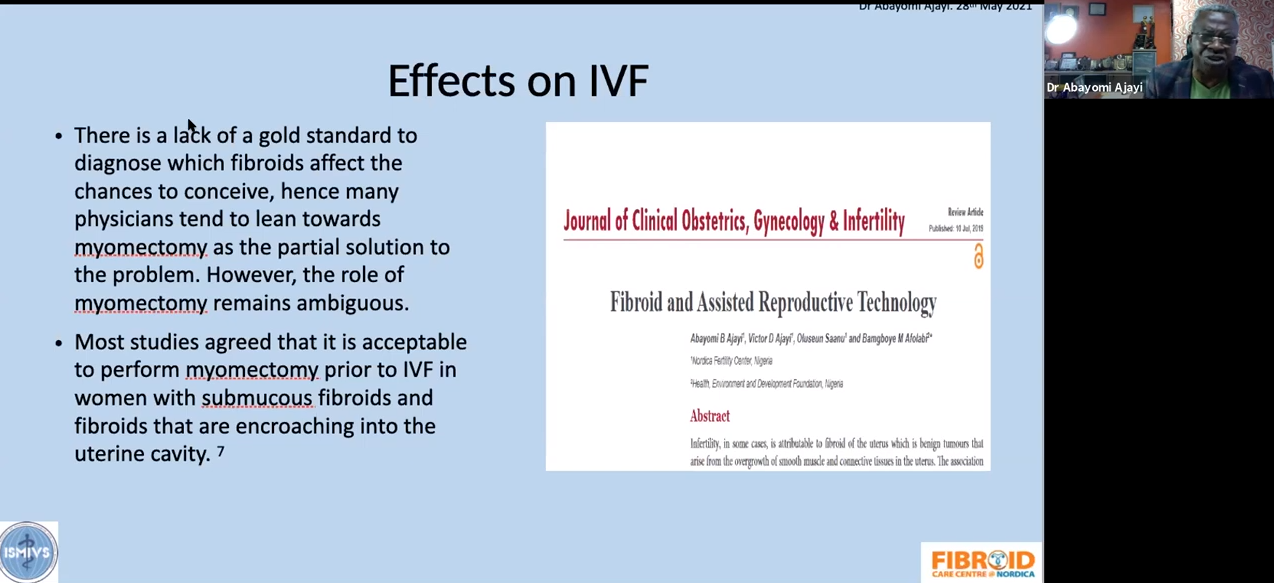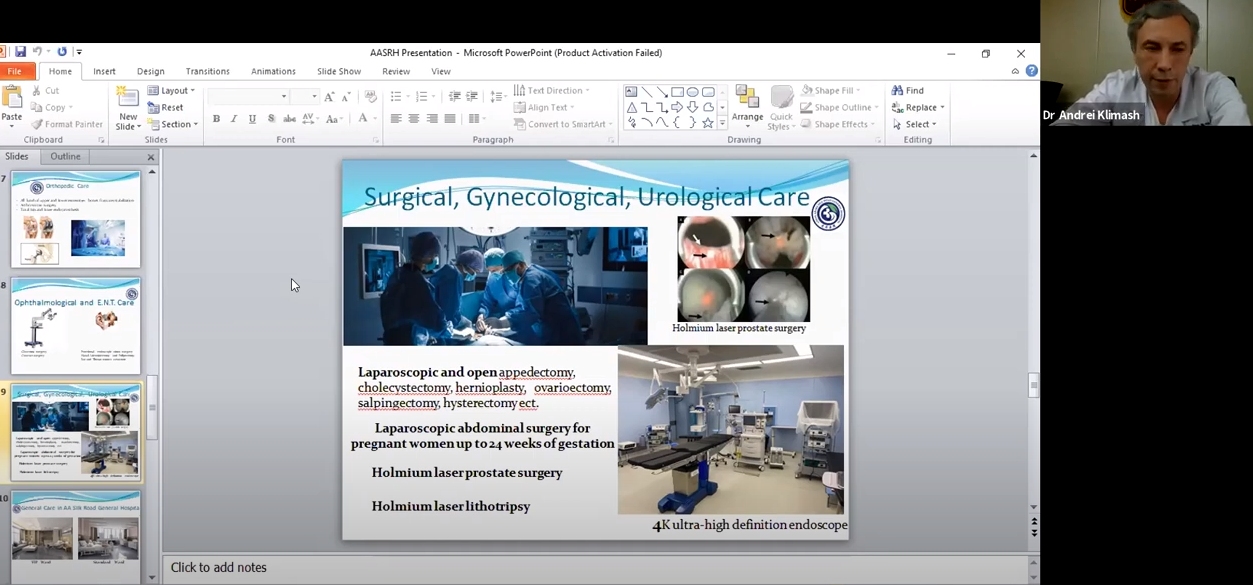Organized by the International Society of Minimally Invasive and Virtual Surgery (ISMIVS), a webinar themed on How can HIFU help to transform women's healthcare in Africa was held on May 28th, 2021, gathering experts from South Africa, Egypt, Nigeria, Ethiopia and Zambia to share latest insights on HIFU treatment.

Dr. Raymond Setzen from South Africa shared his experience of HIFU treatment in the large teaching hospital of Chris Hani Baragwanath Hospital in Johannesburg serving for black people. He said that the traditional treatment of fibroids in health care system were usually accompanied by burdens such as lengthy hospital stay, higher costs, overcrowding wards, excessive use of blood, etc. However, with the development of fibroid treatment from hysterectomy to HIFU, hospitals could enjoy the health care benefits of no hospital admissions, no risk of HIV transmission and low risk of complications while patients were also able to enjoy HIFU advantages of quick recovery, no scars and uterus retained. He also mentioned that the recovery time of US-guided HIFU treatment was 1-2 days while the recovery time of hysterectomy was 4-6 weeks. Among the 485 cases he has treated, shrinkage rate found in follow-up after 1, 3, 6 and 12 months were 31%, 52%, 61%, 73% respectively, the average score of QOL increased from around 35 to almost 75 within 24 months after treatment, and the symptom severity score dropped from 60 to below 20. By comparing the pre-HIFU and post-HIFU MR images, he concluded that HIFU was a safe and effective alternative treatment for uterine fibroids in black women, which had great potential for improving women's health and alleviating burdens on his hospital.

Prof. Mohamed Hamed from Egypt shared his HIFU experience in HIFU Egypt, the first HIFU center in Middle East and Africa. So far, HIFU Egypt has treated 506 patients, among which there were 308 patients with uterine fibroids and/or adenomyosis and 198 patients with tumors (95 liver HCC, cholangiocarcinoma and metastases, 82 pancreas, 3 liposarcoma, 2 aggressive fibromatosis, 8 benign breast lesions, 3 bone metastases and 5 others). As an interventional oncologist, Prof. Hamed thought it was essential to find a new modality that is noninvasive and valid for difficult tumors. He said that HIFU technology was approved by FDA in the treatment for bone metastases and was also approved outside US for essential tremors, osteoid osteoma, prostate cancer, breast cancer, kidney cancer, liver cancer and pancreatic cancer, which shows the high level of research and proof in this technology. He also shared five factors doctors must master before working with HIFU, including anatomy, positioning, surgical approaches, direction of the power and least power need. After his impressive introduction of HIFU application in different cases, Prof. Hamed concluded that HIFU was a technology of the future and would take a good role in the treatment of benign and malignant tumors.

Based on his clinical practice in gynecology, Dr. Abayomi Ajayi from Nigeria shared his thoughts on the clinical impact of HIFU on gynecology in Africa. He mentioned a survey by a tertiary health institution in South-south Nigeria, which showed that uterine fibroids accounted for 7.1% of gynaecological admissions and 21.2% of major gynaecological surgeries, and that most of the cases were seen in 30-39 age group and those with nulliparous status. And in a study of over 900 infertile black African women who had hysteroscopy between 2005 and 2014, open myomectomy was found as a significant factor for intrauterine adhesions. Consider the huge service gap and knotty post-operative complications, the HIFU technology rose in response in Africa. Dr. Ajayi shared a group of statistics in an IDEAL Study that among 1353 women received HIFU, 472 hysterectomies and 586 myomectomies, major adverse events occurred in 0.2% of HIFU and in 12.6% of surgical cases, which showed a significant less morbidity of HIFU than surgery. Dr. Ajayi concluded that HIFU was effective, safe with less complications than surgical treatment.

Dr. Andrei Klimash from Russia mainly introduced the Silk Road General Hospital in Addis Ababa, Ethiopia in the following eight aspects: 1. healthcare services; 2. diagnostic devices; 3. operation theatre; 4. neurological and neurosurgical care; 5. orthopedic care; 6. surgical, gynecological and urological care; 7. general care; 8. professionals and team members. The Silk Road General Hospital is working on the HIFU project, aiming to bring the HIFU treatment to the patients in Ethiopia and clinical training to local doctors.
Dr. Muzaza A. M. Nthele, Counselor-Health, Embassy of Zambia in China, shared his second trip to Chongqing Haifu Medical and introduced the Zambian expert team. During his visit to Chongqing, Dr. Muzaza got to know the noninvasive HIFU technology using non-ionizing ultrasonic waves to heat or ablate tissue and decided to bring it to Zambia to treat the patients with uterine fibroids. He mentioned that open surgery was widely used in Zambia, but may easily cause blood shortage supply and affect fertility. Dr. Muzaza believed that the import of the HIFU technology would allow doctors in Zambia to treat uterine fibroids without the need for blood or competing with other urgent cases. He hoped to create hunger in the Zambia team for HIFU technology through this webinar.






 +86 23 67886199
+86 23 67886199